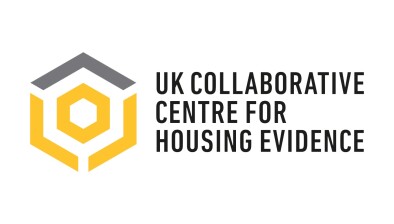Opinion: Addressing LGBTQ+ homelessness through inclusive services

LGBTQ+ people face alarmingly high rates of homelessness, yet many avoid seeking help due to mistrust, discrimination, and a lack of inclusive services. This blog from Dr Edith England and Dr Neil Turnbull explores the barriers LGBTQ+ individuals encounter when accessing support, the systemic gaps that leave them vulnerable, and the urgent need for clear, enforceable guidelines to create truly inclusive homelessness services.
Homelessness among LGBTQ+ people is much higher than in the general population. One in five LGBTQ+ adults were homeless in the last year. LGBTQ+ adults also face a much greater risk of future homelessness, with over a fifth reporting at least one risk factor, such as financial instability or insecure tenancy arrangements. This reflects significant lifetime housing precarity, with nearly half having at least one experience of homelessness or extreme housing insecurity.
However, engagement with statutory agencies, such as the Local Authority, is low among LGBTQ+ people. Very few of those who had recently been homeless told us that they had made a homelessness application – one of the main routes to getting homelessness assistance. Two-thirds told us that if they did become homeless, they would not seek help from their Local Authority.
Discrimination, systemic barriers and historic exclusion from services have led to deep mistrust, which in turn prevents many from seeking support. This is a problem because early engagement with services is known to be critical in preventing homelessness and reducing its length and complexity. We also know that, while support providers do often want to be inclusive, they are struggling to meet the needs of LGBTQ+ people experiencing homelessness, mainly due to lack of understanding, staff training, and resourcing.
We know that LGBTQ+ people face a range of obstacles to engaging with homelessness and other services. These include overt and indirect discrimination, poor understanding of LGBTQ+ specific homelessness and related experiences (for instance, not recognising same-gender domestic abuse), fear of violence and exclusion, and worry that LGBTQ+ specific needs would not be seen as important. Those we spoke to for previous research described a feeling that their sexuality or gender identity was seen as a problem, that they were not really welcome in services, and that services were not ‘for’ them. They also lacked confidence in services to address issues or treat them fairly and respectfully if they made a complaint (England, 2022, 2024).
LGBTQ+ people told us that the reputation of a service within their community was really important to them in terms of engagement. Over four-fifths thought knowing that other LGBTQ+ people had had a good experience of homelessness services was important in terms of their decision as to whether to seek help or not. Previous research also suggests that a negative reputation of a service within a community can have very serious impacts in terms of engagement, making people much less likely to use that service – even where this leads to much longer and more complicated experiences of homelessness.
As public bodies, homelessness services should operate in accordance with the Equality Act 2010, to not only avoid discrimination but actively work to prevent it. It is also clear that the will to create genuinely inclusive services goes beyond legal compliance. Stakeholders stressed that they recognised LGBTQ+ homelessness as a pressing issue. However, they did not know how to address this. They emphasised the importance of efficient and effective solutions which could work for resource-poor, time-limited frontline services.
Based on this, we propose developing a set of clear, good practice guidelines for LGBTQ+ inclusive services underpinned by a recognisable quality mark. The guidelines would offer clarity to service providers on how to help LGBTQ+ people experiencing homelessness and encourage continuous improvement, assessment and enhancement of existing policies and practices. They should include clear and enforceable non-discrimination policies, ongoing evidence-based training for frontline staff and leadership tailored to those interacting with LGBTQ+ homeless populations, appropriate, routine, sensitive and meaningful data collection on sexual orientation and gender identity, and provision of safe and affirming environments, including gender-neutral facilities, inclusive intake forms, and posters and other visual reminders of LGBTQ+ inclusion.
They should be developed, monitored and evaluated with significant, meaningful, and appropriately compensated input from LGBTQ+ individuals with lived experience of homelessness. Underpinning the guidelines with an independently verified quality mark for LGBTQ+ inclusive services would then signal a commitment to inclusion and address mistrust of statutory services among LGBTQ+ communities.
- This article was originally published on the CaCHE website
LGBTQ+ people face disproportionately high rates of homelessness, yet mainstream services remain inaccessible and unwelcoming. Mistrust, fear of discrimination, and a lack of targeted help prevent LGBTQ+ people from seeking help. At the same time, services often lack the knowledge, training and resources to provide truly inclusive and effective support. A standardised set of clear, good practice, guidelines, underpinned by an independently verified quality mark, would set clear expectations for service providers and offer assurance to LGBTQ+ people about the standards of service they could expect. This approach would help services implement best practices, address staff training, create safe and affirming environments and ensure that data collection informed future improvements.
England, E. (2022). ‘Homelessness is a queer experience.’: utopianism and mutual aid as survival strategies for homeless trans people. Housing Studies, 1–18.
England, E. (2024). ‘It’s Not Just About a Rainbow Lanyard’: How Structural Cisnormativity Undermines the Enactment of Anti-Discrimination Legislation in the Welsh Homelessness Service. Journal of Social Policy, 53(2), 366–385.









